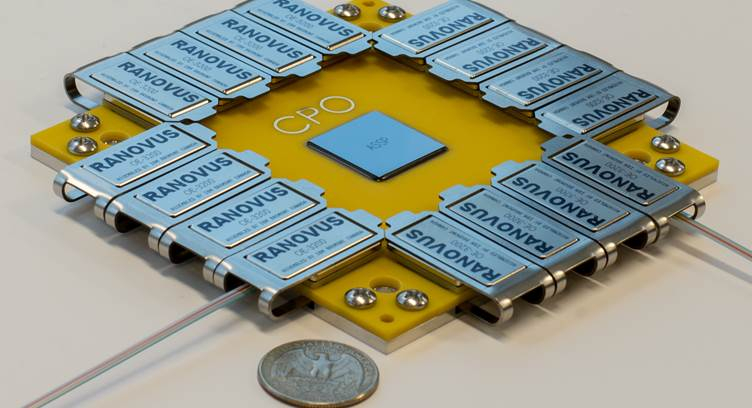Ranovus on Thursday announced the launch of its new single chip silicon photonic engine, Odin platform which the company claims can deliver 50 percent power consumption/Gbps reduction and 75 percent cost/Gbps reduction over today’s solutions.
Based in Ottawa, Canada, Ranovus is a leading provider of multi-terabit interconnect solutions for data center and communications networks.
The Company said that Odin scales Ranovus’ 100 Gbps per lambda silicon photonics engine from 800 Gbps to 3.2 Tbps in a single chip supporting both module and Co-Packaged Optics solutions. Ranovus’ Odin platform incorporates the company’s disruptive innovation in multi-wavelength Quantum Dot Laser (QDL), 100 Gbps silicon photonics based Micro Ring Resonator modulators and photodetectors, 100 Gbps Driver, 100Gbps TIA and control Integrated Circuits supported by a Tier 1 packaging ecosystem.
Highlights of Ranovus’ Odin 8 silicon photonics Engine:
Ø Lowest power consumption/Gbps and cost/Gbps solution in the industry
Ø Supports ML/AI applications with 0.4nsec low latency and protocol agnostic engine
Ø Supports transmission distance of 10m to 2km in CWDM and DWDM applications
Ø Offers 8 optical channels of 100Gbps/64Gbps/50Gbps PAM4 or 50Gbps/32Gbps/25Gbps NRZ
Ø Supports DR & FR configurations
Ø Supports QSFP-DD and OSFP module form factors
Ø Supports 25.6Tbps and 51.2Tbps Ethernet Switch configurations
Hamid Arabzadeh, Chairman and CEO, Ranovus
Odin platform delivers Odin 8 marks the beginning of the road to multi-terabit Co-Packaged Optics for Compute, Storage and Networking solutions.
John Martinho, SVP R&D, Ranovus
Intra-Data Center traffic is growing at a rate that outpaces anything seen outside of the data centers and is expected to triple in the next five years. This growth in traffic is driving global energy consumption, for power and cooling, that is simply not sustainable at the current trajectory.




















